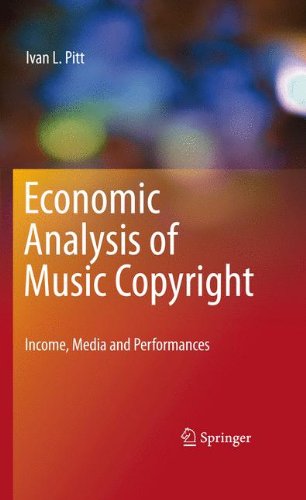

Most ebook files are in PDF format, so you can easily read them using various software such as Foxit Reader or directly on the Google Chrome browser.
Some ebook files are released by publishers in other formats such as .awz, .mobi, .epub, .fb2, etc. You may need to install specific software to read these formats on mobile/PC, such as Calibre.
Please read the tutorial at this link: https://ebookbell.com/faq
We offer FREE conversion to the popular formats you request; however, this may take some time. Therefore, right after payment, please email us, and we will try to provide the service as quickly as possible.
For some exceptional file formats or broken links (if any), please refrain from opening any disputes. Instead, email us first, and we will try to assist within a maximum of 6 hours.
EbookBell Team

4.3
98 reviewsChris Anderson's initial `Long Tail' analysis was released in 2004 just as the wave of mergers and acquisitions was sweeping the music publishing and radio industries. Music industry executives began looking for Anderson’s ‘Long Tail’ effect and with it the implied redistribution of royalty income from popular songs to long dormant and forgotten works in their catalogs. These music publishers had hoped to further maximize the value of their copyright assets (lyrics and melody) in their existing music catalogs as the sale of compact disks diminished, and consumers switched their purchasing and listening habits to new digital formats in music technology such as the iPod. This book deals with the measurement of skewness, heavy tails and asymmetry in performance royalty income data in the music industry, an area that has received very little academic attention for various reasons. For example, the pay packages, including signing bonuses, of some `superstars' in the sports world are often announced when they join a team. In the art world, the value of an artist's work is sometimes revealed when the work is sold at auction. The main reason it is difficult to study art and culture from a royalty income perspective is that most of the income data at the individual level is often proprietary, and generally not made publicly available for economic analysis. As a Senior Economist for the American Society of Composers, Authors, and Publishers (ASCAP) using both internal and licensed external proprietary data, the author found that the so-called `superstar effects' are still present in performance royalty income. Success is still concentrated on a relatively few copyright holders or members who can be grouped into `heavy tails' of the empirical income distribution in a departure from Anderson's `long tail' analysis. This book is divided into two parts. The first part is a general introduction to the many supply and demand economic factors that are related to music performance royalty payments. The second part is an applied econometrics section that provides modeling and in-depth analysis of income data from a songwriter, music publisher and blanket licensing perspective. In an era of declining income from CD album sales, data collection, mining and analysis are becoming increasingly important in terms of understanding the listening, buying and music use habits of consumers. The economic impact on songwriters, publishers, music listeners, and Performance Rights Organizations (PROs) is discussed and future business models are evaluated. The book will appeal to researchers and students in cultural economics, media and statistics as well as general readers and professionals in the music publishing industry.